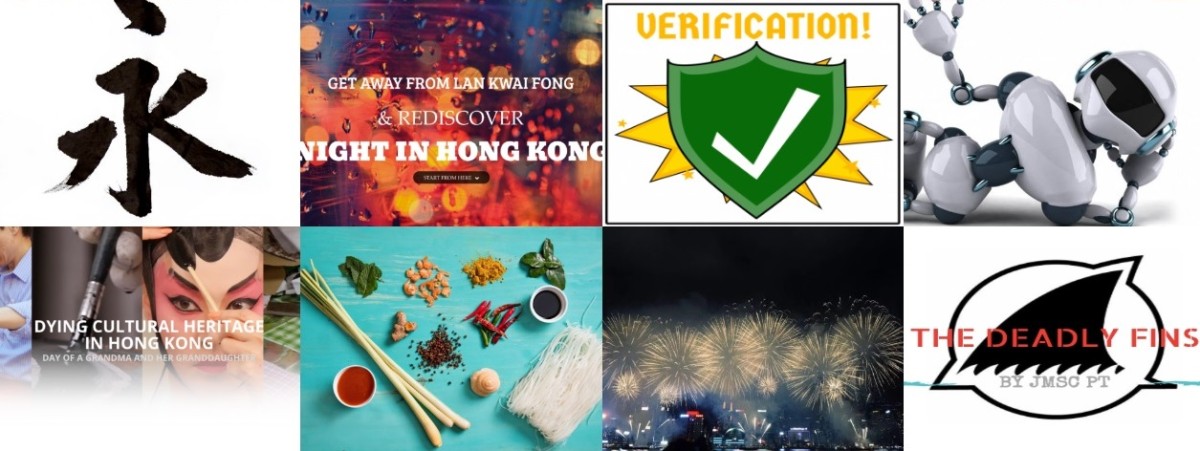
JMSC students learn adaptability is key to “real world” journalism on winter internships around Asia
27 January 2017
Learning about the unique area of wine journalism and how it differs from lifestyle reporting
17 February 2017Students experiment with innovative storytelling through digital projects

Traditional Chinese characters shown through interactive graphics. A walk through Hong Kong’s recent history using scannable barcodes. And bots publishing stories and replying to reader messages on Facebook.
These were just a few of the ways that Master of Journalism students at the JMSC experimented with new forms of digital storytelling as their final projects for a digital journalism course last semester.
Eight projects were produced by students taking the Digital journalism principles and tools course, one of the core courses of the MJ programme that all students take.
The projects look at life in Hong Kong and the wider Asian region and include interactive websites—with multimedia clips produced by the students and custom-made graphics―and innovative automated Facebook pages.

Chinese Traditions in Modern Hong Kong uses interactive graphics that can be explored and scrolled over to read more detail
The course instructor, Honorary Lecturer Darcy Christ, said that the focus of the class and project was on experimentation and trying out new forms of digital storytelling.
“New tools are appearing every day. Each tool brings with it new ideas about how and what to produce. I wanted the students to get used to exploring new tools and experimenting with ways to use them,” he said.
Christ encouraged WordPress as a platform for hosting the projects, but said this wasn’t required and it was left open for students to use whatever tools they decided worked best.
“With digital journalism there is an inclination to decide first how to tell a story before discovering what that story is,” he said. “This is technology for technology’s sake, and not an effective way to present anything.”
“In some ways, certain stories might be better served by more traditional methods. Although, with this project I was pushing the students to try something new.”
Christ said the projects that worked best were those that allowed the subject to inform how the story was told.
The Chinese Traditions in Modern Hong Kong website explores four Hong Kong traditions (fortune-telling, kung fu, calligraphy and opera) through video interviews and interactive graphics. The strokes of Chinese characters or palmistry lines in fortune-telling, for example, lent themselves to further exploration in a digital format and the team used interactive clickable graphics of them as a way to present the story.

The Voice of Handover team placed physical QR codes around Hong Kong in an effort to attract readers to spontaneously connect with their story
Projects Voice of Handover-A moment of connecting and Welcome to Little Thailand also incorporated interesting ways to tell their stories. The former structured their website around a timeline of the handover period of Hong Kong back to China and also used physical QR codes (Quick Response barcodes that can be scanned by smartphones and tablets) placed around the city to connect to their online story.
Student Andy Liu Zhaohui said that the idea behind the codes was to “create interactivity with readers in a quiet way” which is “less intentional and more surprising”. “We thought that QR codes at Hong Kong’s landmarks would attract curious tourists and local residents to spontaneously scan them and go to the website,” he said.
Two of the teams—JMSC AI and JMSC Shark Bot—created Facebook pages with bots (software applications that run automated tasks over the internet) which are able to independently publish stories to the pages, and also reply to messages through Facebook’s chat messenger.
Kuki Xiuxi Zhu said that the main purpose of the JMSC AI project was to increase awareness of the concept of artificial intelligence, and the team thought it would be interesting if the audience could also experience AI while they read about it.
Zhu said, however, that presenting news through a bot in this way poses certain challenges: “The content must be more enriched, original and edgy so that people will be interested to read it,” she said. “How to attract indifferent people to initiate a conversation with the bot is also still a puzzle.”
Go here to see all of the projects.

